TikTok is quickly becoming the go-to platform for affiliate marketing. The platform’s unique ability to blend entertainment with shopping offers brands a powerful tool to drive sales. What’s more, with TikTok Shop’s seamless integration, vast creator network, and real-time tracking, you can capture new customers faster, partner with relevant creators sure to drive results, and scale quickly.
This guide helps you understand how you can leverage TikTok affiliate marketing for your ecommerce brand and set up a system that drives consistent sales growth.
What is TikTok affiliate marketing?
TikTok affiliate marketing allows creators to earn passive income by promoting products within their TikTok videos.
Content monetization allows creators with high influence to showcase products to their engaged followers and provide a direct link to make purchases. When a viewer clicks on the affiliate link and completes a purchase, the creator earns a commission. This is one of the most common ways for creators to make money on TikTok.
For example, Tabs Chocolate, a mood-enhancing dark chocolate brand, faced challenges in promoting its product. They partnered with micro-influencers who were already using their products, incentivizing creators and tracking their sales with a unique affiliate link assigned to them.
This helped them increase their GMV by 17% in the first month and also led to an ROI of 9.8x.
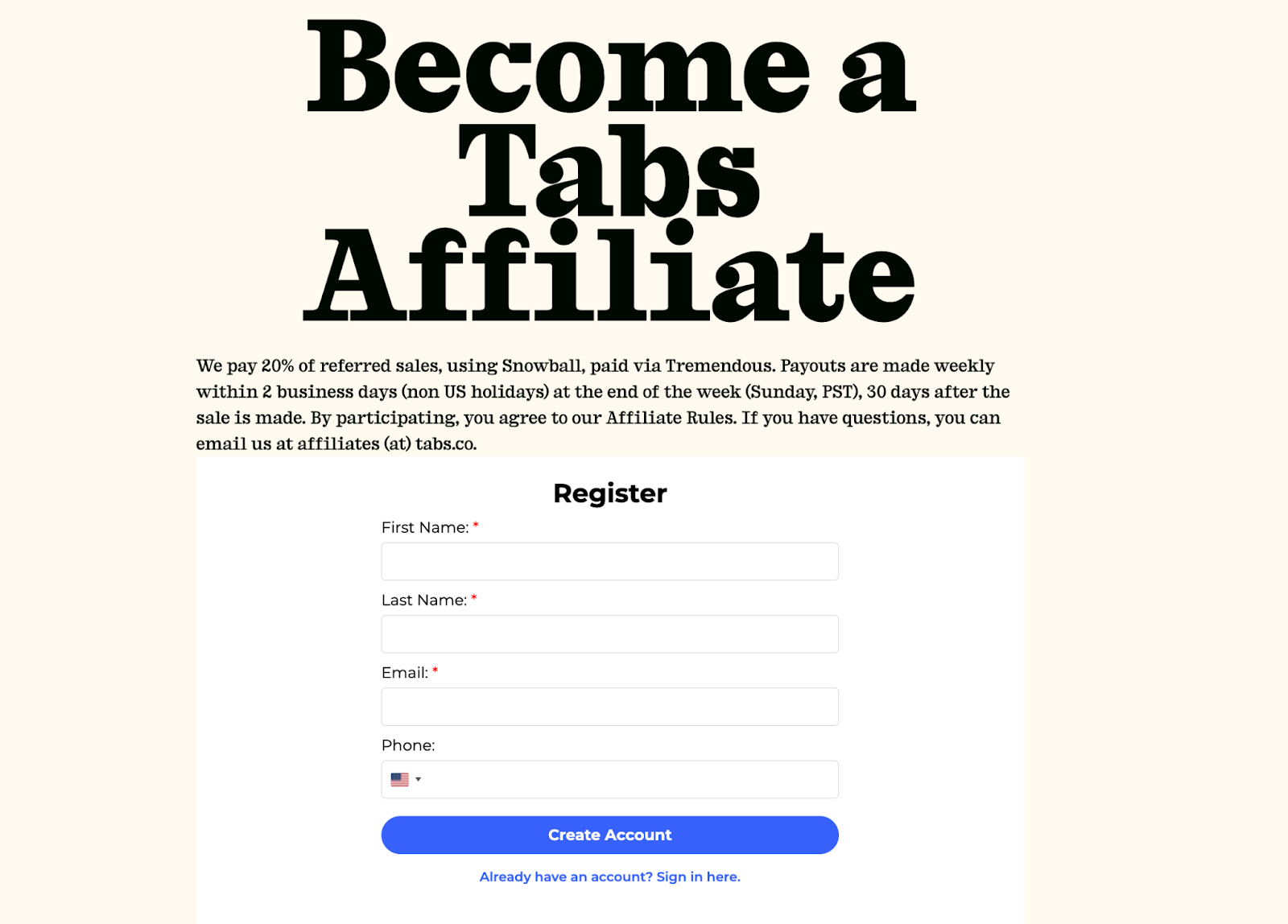
Why is TikTok an effective channel for affiliate marketing?
TikTok has thousands of creators who share authentic, user-generated content while promoting products in a way that feels genuine and relatable. With the platform's diverse user base and algorithm-driven content discovery, affiliate marketers can easily reach a wide audience, making it an ideal platform for driving both awareness and conversions.
Here's why TikTok stands out for affiliate marketing:
- High discoverability: TikTok’s algorithm promotes engaging and creative content, allowing affiliate campaigns to be easily discovered by a wide audience, even beyond the influencer's followers.
- Authentic content and high trust: TikTok encourages creators to share genuine experiences, making affiliate promotions feel natural, unlike traditional marketing ads. This authenticity has led to a viral “TikTok Made Me Buy It” trend where users often share which recommendations they were convinced by and their buying experiences.
- Ecommerce integration: TikTok’s expanding ecommerce features allow affiliates to easily link to products, track conversions, and measure success. This seamless integration with the platform enables a frictionless shopping experience, making it easier for creators to drive sales while tracking performance.
- Short-form video format: TikTok’s short, engaging videos capture attention quickly, delivering product information concisely and memorably.
- Diverse niches: TikTok caters to a wide range of interests and niche communities, allowing affiliates to target specific demographics with tailored product recommendations.
Difference between affiliate marketing and influencer campaigns
Affiliate marketing and influencer marketing are both popular online marketing strategies, but they differ in their approach, payment structure, and goals. Affiliate marketing is more sales-driven with performance-based compensation, while influencer marketing focuses on engagement and brand awareness, often with a flat payment model.
Here's a breakdown of the key differences:
- Affiliate Marketing
- Goal: Driving conversions and sales.
- Payment: Affiliates earn a commission based on the sales they generate through unique links.
- Partners: Social media personalities and creators, bloggers, websites, and businesses.
- Measurement: Results are tracked through sales volume, traffic, and order numbers.
- Influencer Marketing
- Goal: Aims to build brand awareness, engagement, and sometimes drive sales.
- Payment: TikTok influencers are typically paid through fixed fees, free products, or a combination of both.
- Partners: Social media personalities and creators, or celebrities with strong followings.
- Measurement: Success is measured through social media engagement, traffic, follower growth, and occasionally sales.
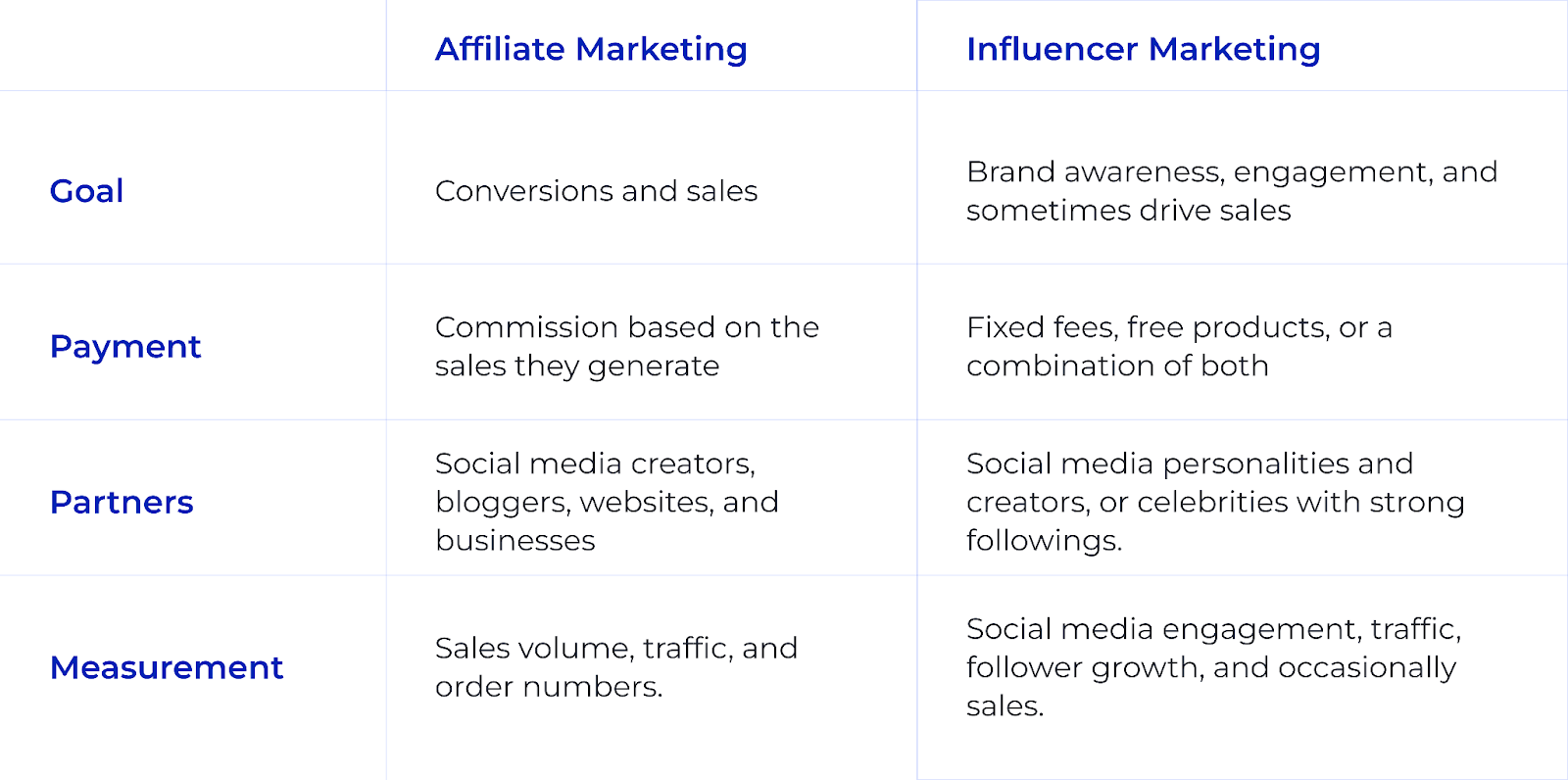
How does affiliate marketing work on TikTok?
While you may have seen creators sharing product recommendations, what does it look like on the brand’s side? We’ve broken down the steps for you.
Here’s how affiliate marketing works on TikTok:
- Brands find creators: Brands can partner with creators through TikTok Shop’s affiliate programs or by directly reaching out to them. Brands often use creator marketplaces like TikTok Creator Marketplace or third-party platforms to discover creators whose audience aligns with their products.
- Creators promote the product: Creators make engaging content around the brand’s product, such as reviews, tutorials, or demonstrations. These creators can drive sales for the product in two ways:
- Direct website sales: Creators add affiliate links to send viewers to the brand’s website, where shoppers can make purchases.
- TikTok Shop: If the brand has a TikTok Shop, creators promote products listed here. Users can shop without leaving the app.
How affiliate marketing from TikTok to your DTC store works
Brands can use TikTok creators to increase brand visibility, drive traffic to their website, and generate direct sales.
Here is a step-by-step guide on how to use TikTok to drive affiliate traffic to your DTC store:
- Partner with TikTok creators: DTC brands collaborate with TikTok creators whose audience aligns with their products. These creators can be found either through TikTok’s Creator Marketplace or directly by the brand.
- Generate and distribute affiliate links: Brands provide these creators with unique affiliate links or discount codes to track the sales driven by the creators' content. The links are shared within TikTok videos, in the creator’s bio, or through other promotional channels like personal websites or social media platforms.
- Create and promote content: Creators produce engaging video content showcasing the brand’s products. This could include product demonstrations, reviews, or creative videos that showcase how the product fits into their lifestyle. The affiliate link is embedded in the video description or creator bio that followers can click to learn more or make a purchase.
- Track sales and earn commissions: Once a user clicks on the affiliate link and makes a purchase on the DTC website, the sale is tracked back to the creator. The creator earns a commission based on the sales generated through their affiliate link.
How affiliate marketing via TikTok Shop works
TikTok Shop connects creators and brands (known as sellers on TikTok’s platform). Creators can earn commissions by promoting products within TikTok Shop while brands get more visibility and product sales. Here's a breakdown of how it works:
- Brands create their TikTok Shop listings: Brands can create a business account on TikTok and apply for a TikTok Shop. Once approved, they can set up product listings.
- Creators join the affiliate program: Creators can sign up for TikTok’s affiliate marketing program to promote products that align with their audience and content.
- Creators promote products: Creators produce engaging TikTok videos featuring the brand's products, showcasing their features, benefits, and real-world usage. They include the TikTok Shop product link for instant purchase.
- Sales are tracked: When someone purchases a product through the creator’s affiliate link, the sale is tracked, and the creator earns a commission.
- Commissions are paid: TikTok Shop handles the commission payouts automatically.
- Brands gain visibility and sales: Brands part of the affiliate program capture new sales through these creator promotions. For every sale, brands pay out a commission to the creator and TikTok.
- Performance tracking: Brands can monitor how well creators are selling their products and reward high-performing affiliates with bonuses.
For example, Triquetra Health, a wellness brand, successfully scaled its TikTok Shop affiliate sales, generating over $350K per month. They automated influencer outreach and affiliate management using Social Snowball, allowing them to onboard 6,246 new affiliates in just one month.

TikTok Shop vs. DTC website: Where should your affiliates send traffic?
TikTok Shop allows users to purchase directly within the app, making it convenient for quick, impulse-driven sales. However, directing affiliate traffic to your DTC website provides more control, offering opportunities for upselling, better profit margins, and deeper customer insights.
Here’s a quick comparison between running your affiliate program through TikTok to your website and running your program directly on TikTok Shop.
TikTok Shop
- Best for: Brands optimizing for native TikTok sales and high discovery.
- User journey: Seamless in-app purchase within TikTok Shop.
- Affiliate enrollment: Affiliates apply directly through TikTok Creator Marketplace.
- Commission management: Fully flexible, with customizable tiers, payouts, and incentives.
- Additional fees: Sellers pay TikTok 5–8% per sale + ~1.8% transaction fee (US)
- Payouts: Payouts are handled by TikTok.
- Brand control: Limited control over branding and upsells
- Customer data ownership: Limited access to first-party customer data.
TikTok to DTC Website
- Best for: Brands wanting full control & deeper customer insights.
- User journey: User clicks link and is redirected to the brand site to purchase.
- Affiliate enrollment: Managed externally (via platforms like Social Snowball).
- Commission management: Fully flexible with customizable tiers, payouts, and incentives.
- Additional fees: Standard payment processing fees only (via your platform).
- Payouts: You choose your preferred methods (PayPal, store credit, etc.).
- Brand control: Full control over experience, landing pages, and pricing.
- Customer data ownership: Full access to customer emails and behavior.
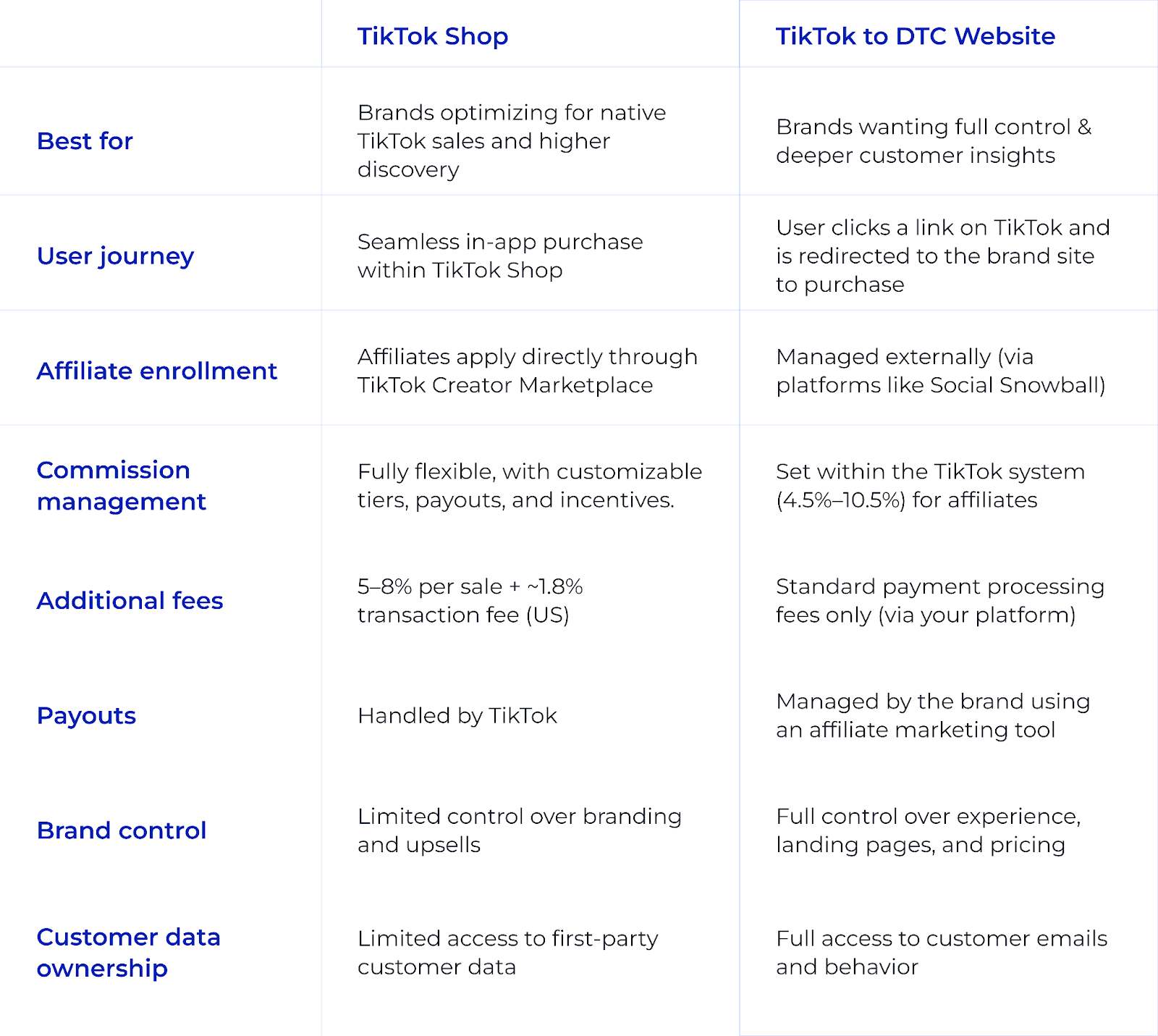
When deciding whether affiliates should drive traffic to TikTok Shop or your DTC website, it’s important to weigh the differences and benefits of each approach.
Some pros and cons of TikTok Shop are:
- Pros: Built-in exposure, ease of purchase within the app, and potential for viral growth. It can help drive initial engagement and product discovery.
- Cons: While it offers seamless sales, TikTok Shop takes a commission, and you have less control over the customer journey and data.
Similarly, there are pros and cons to sending affiliate traffic to your DTC website:
- Pros: You retain full control over the branding, customer experience, and sales journey. You can collect valuable customer data (like emails) for future digital marketing efforts, which is vital for building relationships and customer loyalty.
- Cons: Requires more effort to drive traffic, and users need to leave TikTok to complete the purchase.
How to set up affiliate marketing on TikTok: Step-by-step guide
Here is a step-by-step guide that will help you start affiliate marketing on TikTok, from choosing the right strategy to tracking performance.
Choose your affiliate strategy and tool
First, decide whether you'll direct affiliate traffic to TikTok Shop or to your DTC website. Each strategy has its benefits, but the decision depends on your marketing objectives. Driving traffic to your website gives you better control over external traffic, while TikTok Shop offers seamless, in-app purchases with integrated affiliate tracking.
Platforms like Social Snowball help automate and scale affiliate marketing. It integrates with both TikTok Shop and your website, automating affiliate sign-ups, payouts, and tracking, saving your team significant manual effort and improving scalability.
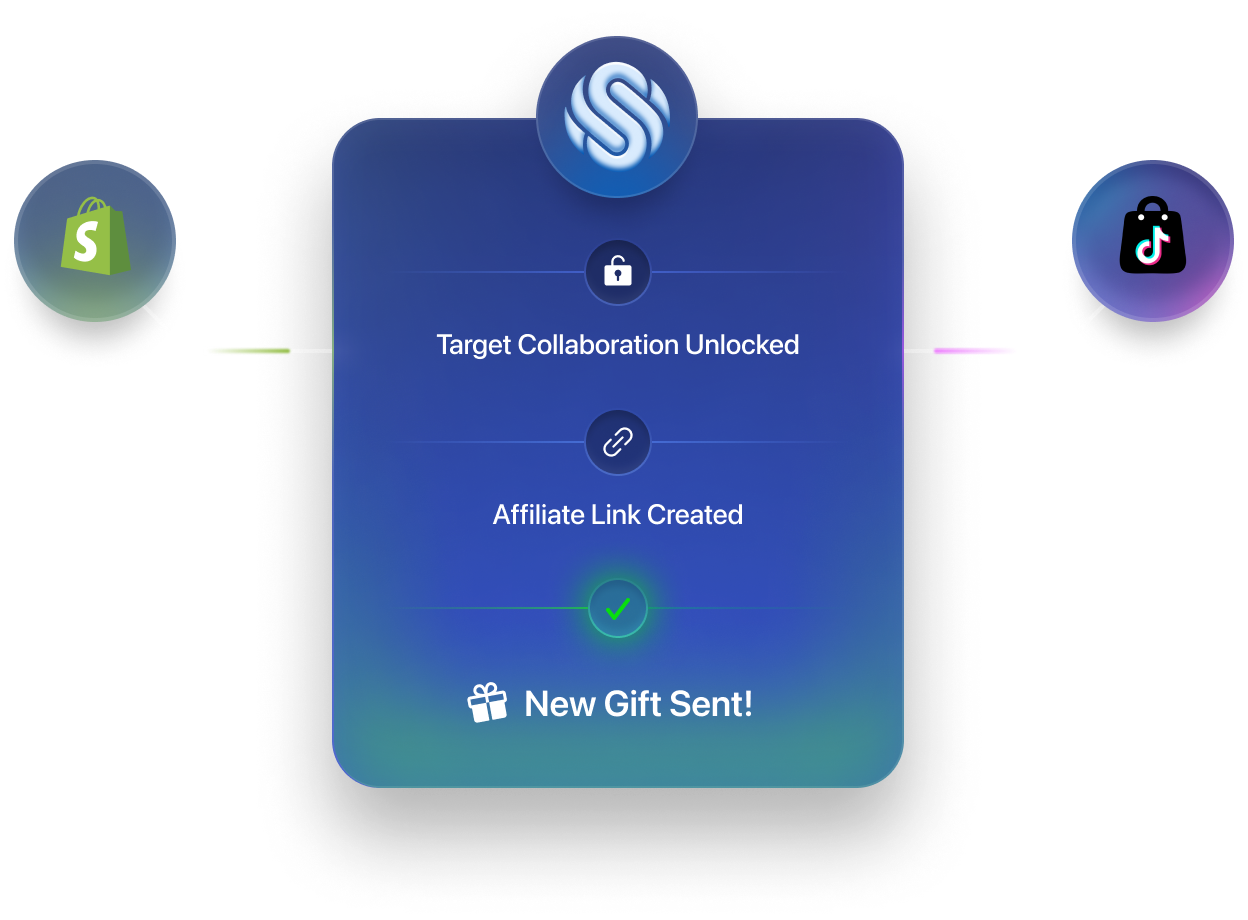
Define your commission structure
Establish a clear commission structure based on your brand's goals and budget:
- Flat rate: Set a fixed commission per sale (e.g., $10 per conversion) for simplicity and consistency.
- Tiered commission: Offer escalating commissions to incentivize affiliates to push for higher sales (e.g., 10% for $1,000 in sales, 15% for $5,000).
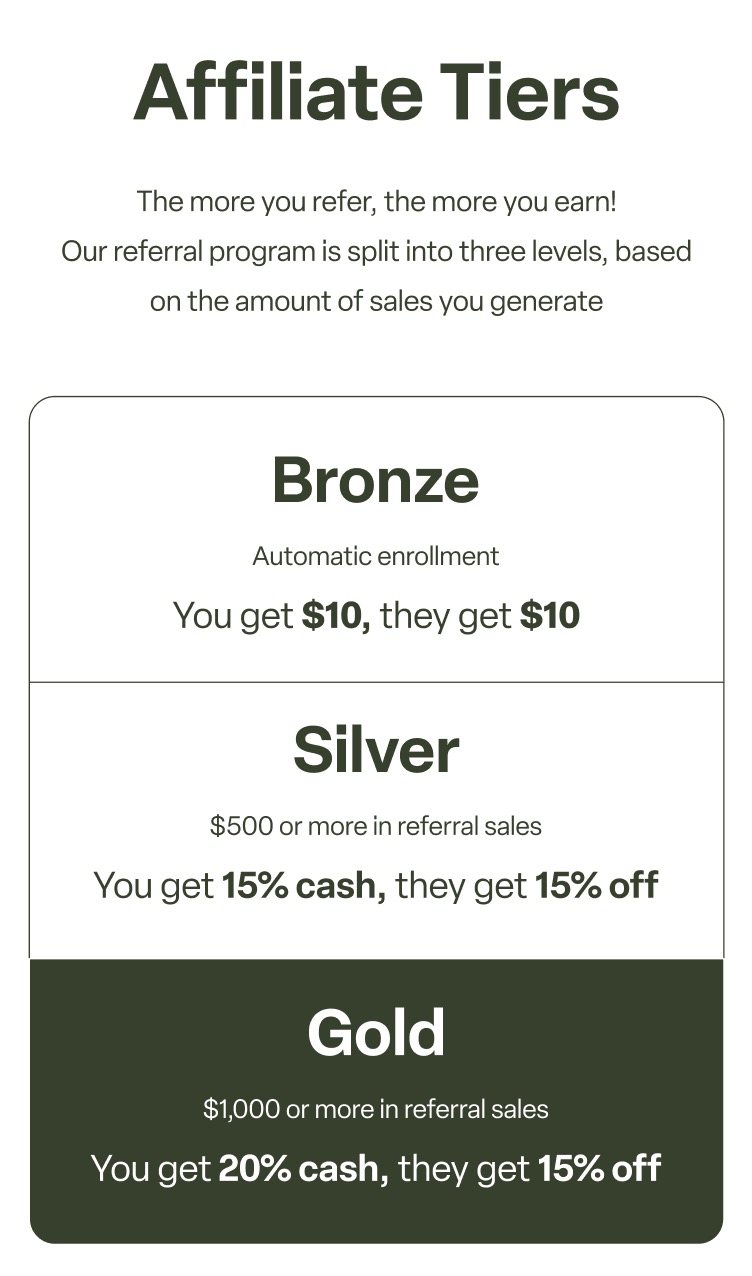
- Bonuses: Reward affiliates for specific milestones like generating 50 sales or creating content with higher engagement.
On TikTok Shop, besides the commission for your affiliates, TikTok charges an additional 4.5% to 10.5% commission fee, which will reduce your profit margins compared to selling directly through your DTC store.
If you’re directing traffic to your DTC website, use affiliate marketing tools like Social Snowball to streamline bulk payouts. It offers multiple payment methods, offering flexibility for your affiliates and send out accurate payments on-time, saving hours per week.
Set up assets for your affiliate to maintain brand consistency
Provide your affiliates with a style guide that includes your brand’s mission, tone, and identity. Specify whether your brand's tone is formal or casual, and give examples to help them align their content. Read how you can help affiliates create better content.
Some important assets to include in your brand kit are:
- Visual guidelines: Outline how to use your logo, fonts, and color palette to guarantee uniformity across all promotions.
- Content types: Define the content you want affiliates to create (e.g., reviews, tutorials, unboxings).
- Product focus: If you aren’t on TikTok Shop, you need to give affiliates guidance on which products to promote. Share a list of affiliate products, along with each product’s unique selling points (USPs), features, and benefits.
- Target keywords: Share relevant keywords that should be used in content to optimize for search and improve SEO.
You can build a centralized hub where affiliates can access these resources to simplify content creation. This will save time and streamline their production process. Here, you can include content ideas, product features to highlight in reviews, social media post templates, compliance regulations, and best practices.
Bonus tip: Organize the hub with categories like content type, theme, and purpose, and add a search function for easy navigation. You can also include data on which content types (e.g., product reviews or unboxing videos) generated the best results to give affiliates more clarity.
Find TikTok creators to join your affiliate program
Use TikTok’s Creator Marketplace and hashtag search to identify relevant content creators.
Some key factors to consider when picking TikTok creators are:
- Engagement over follower count: Focus on creators with high engagement rates (likes, shares, comments) rather than simply large follower counts.
- Niche alignment: If the creator’s niche isn’t aligned with your brand, their audience won’t be relevant to you, driving no sales for your brand.
- Authenticity: Choose creators who genuinely align with your brand. Authentic endorsements drive higher conversion rates and more genuine content.
Note: If you’re part of the TikTok Shop affiliate program, creators can find your brand through the portal and sign up to promote your products, requiring little to no promotion from your brand’s side.
Recruit affiliates
Once you’ve identified potential creators, reach out via DMs or email. Be specific about what you’re offering, including commission details, benefits, and the partnership’s potential for growth.
Some best practices when recruiting affiliates for TikTok are:
- Personalize your outreach to stand out.
- Highlight why the creator is a good fit for your brand, focusing on their unique engagement and niche rather than just offering a generic pitch.
Onboard them to your program
Make sure affiliates can easily get started by providing them with the necessary tools and assets from day one. This includes pre-set email templates, promotional materials, and clear instructions on creating content.
Here’s an example of an onboarding email that Javvy Coffee sent to their new affiliates to help them get started.
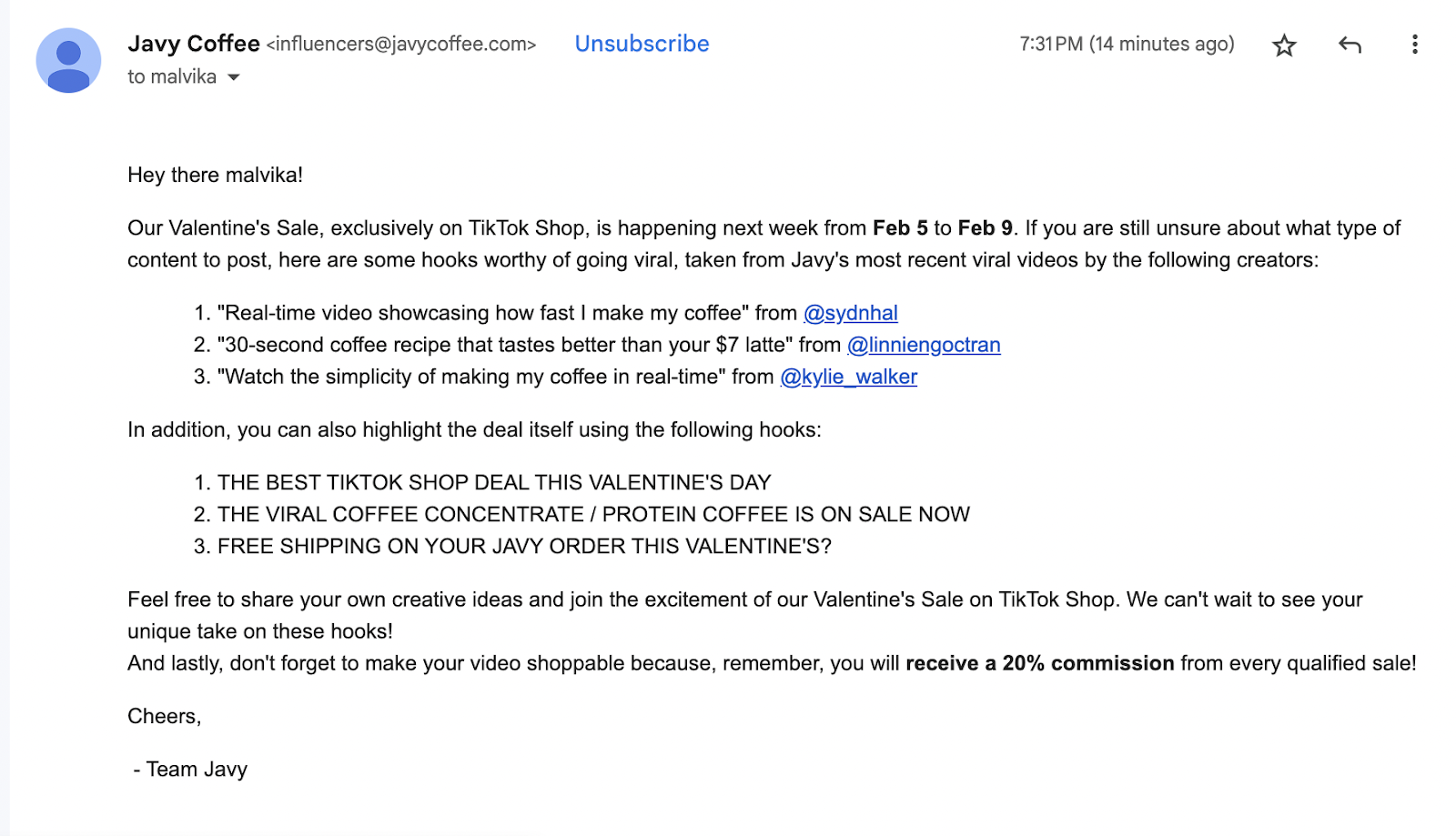
Provide affiliates with a centralized dashboard to track performance, view their unique tracking links, and manage commissions.
Tools like Social Snowball create customized dashboards for your affiliates, which are automatically updated with the affiliate’s tracking link and attributed sales.
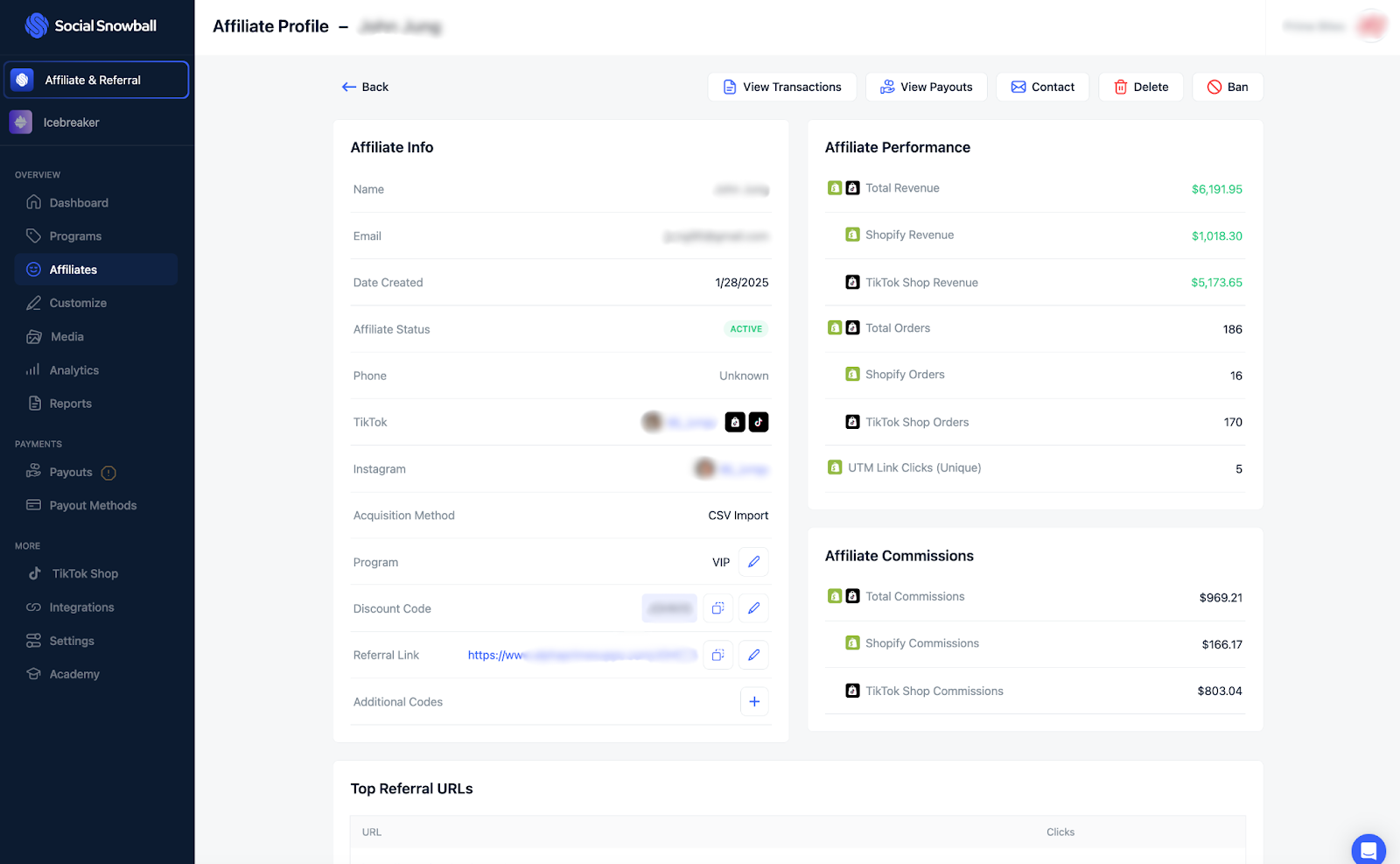
Set up automated communication
Keep affiliates engaged and motivated by sharing timely updates. Automating your communication maintains consistent contact with affiliates without manual effort.
Here are a few types of messages to automate:
- Onboarding email with access to tracking link, details on requesting a gift, and the affiliate’s dashboard.
- Sale notifications
- Milestone updates (e.g., after generating 10 sales or celebrating a 6-month anniversary)
- Payout updates to keep affiliates informed about their earnings.
Track your program
Monitor the performance of each affiliate and content piece in real-time, including key metrics like:
- Sales volume: Track the number of sales generated by each affiliate.
- Click-through rate (CTR): Measure how often viewers click on affiliate links to gauge engagement.
- Conversion rate: Track the percentage of clicks that result in purchases.
- Revenue per affiliate: Measure how much revenue each affiliate is driving to assess their overall contribution.
Set up monthly check-ins to evaluate the performance of your program. Identify the best-performing creators and content, and adjust your strategies based on the data.
Iterate based on results
Based on the performance data, you can make improvements to your program:
- Share tips with your affiliates on the kind of content that drives the most conversions.
- If certain affiliates or content types perform better, increase commission rates for high performers.
- Tweak creator briefs to align with successful strategies.
- If affiliates from a specific region or niche perform best, prioritize recruiting affiliates similar to them as you scale your program.
Repurpose top TikTok content
TikTok content that performs well can easily be repurposed and distributed across other channels:
- For ads: Convert top-performing affiliate videos into TikTok ads or even ads on platforms like Instagram.
- On your own social media: Repost these user-generated videos on your brand’s social channels to reach new audiences.
- As shoppable videos on your website: Embed affiliate content directly on your product pages, allowing customers to purchase seamlessly.
Download our guide on ‘How to Repurpose Affiliate Content To Maximize Revenue’ to explore more ideas and make the most of your affiliate marketing campaign.
Ready to capture more affiliate-driven sales through TikTok?
TikTok has rapidly become one of the most effective platforms for ecommerce brands to drive affiliate sales. By leveraging TikTok's user base and TikTok Shop’s seamless shopping features, brands can drive traffic, increase conversions, and measure results instantly.
Social Snowball is the perfect tool to help you streamline and scale your TikTok affiliate marketing. It automates affiliate onboarding, tracking, and payouts, allowing you to focus on strategy while it handles the operational work.

Frequently asked questions
How do I set up TikTok Shop for my ecommerce brand?
To set up TikTok Shop for your ecommerce brand, you'll need to create a TikTok business account, register as a seller, and connect your online store to TikTok Shop. This involves signing up on the TikTok Seller Center, verifying your business, adding product details, and setting up shipping and payment options.
Here’s a step-by-step guide:
- Create a TikTok account: If you haven't already, switch to a TikTok for Business account to access TikTok's commerce features.
- Register as a seller on TikTok Shop: Access the TikTok Seller Center or the relevant section within your Shopify admin if using the Shopify integration.
- Set up your Shop and product catalog: Configure your shop's name, logo, and other branding elements. Upload your product listings to TikTok Shop, making sure all details (descriptions, images, pricing) are accurate.
- Connect your payment methods: Link your payment options for both receiving payments for sales and paying for advertising.
- Integrate with your ecommerce platform: Sync TikTok Shop with your ecommerce platform (e.g., Shopify) to automate inventory updates and order processing.
- Promote your products: Start creating shoppable TikTok videos and use TikTok's advertising options to reach your target audience.
Should I drive affiliate sales through TikTok Shop or have creators link directly to my DTC store? How do I decide?
The decision between using TikTok Shop or directing creators to your DTC store depends on your business goals, product type, and desired level of control. Here’s a breakdown:
TikTok Shop
- Advantages:
- Built-in audience: TikTok’s algorithm amplifies content, allowing creators to reach a broader audience.
- Data insights: TikTok provides valuable insights into sales performance and audience engagement.
- Seamless integration: TikTok Shop simplifies the affiliate process by providing integrated tools for creators to promote and track sales.
- Viral growth: If content resonates with the TikTok community, it can go viral, generating a surge in sales.
- Disadvantages:
- Limited customer data: TikTok controls customer interactions, meaning you have less access to customer data.
- Lower profit margins: TikTok takes a commission from each sale.
Direct Links to DTC Store
- Advantages:
- Higher profit margins: You retain more of the profit per sale compared to using TikTok Shop’s commission structure.
- Direct customer relationships: Collect valuable customer data for future marketing.
- Full control over customer experience: You can fully customize the checkout experience and manage the customer journey.
- Flexibility: Adapt your sales strategy without limitations from TikTok’s platform.
- Disadvantages:
- More effort in marketing: You need to invest more in driving traffic to your site.
- Longer conversion journey: Since shoppers are directed to an external link, they may take longer to checkout or even end up dropping off.
If you sell niche or high-ticket items, direct links may be more beneficial due to higher margins. Whereas, for brands aiming for broader reach and cost-effective marketing (especially if you’re a beginner), TikTok Shop is a great starting point.
You can also consider using both methods for maximum exposure, tracking performance to optimize your strategy.
What types of content do TikTok creators share about ecommerce brands?
A few common types of content that TikTok creators share about ecommerce brands are:
- Product reviews and tutorials: Honest reviews and product demonstrations.
- Unboxing videos: A first look at the products and packaging.
- User-Generated Content (UGC): Organic content showcasing your product.
- Branded content: Sponsored videos, often part of a campaign or challenge.
- Livestream shopping: Live sessions promoting and selling products.

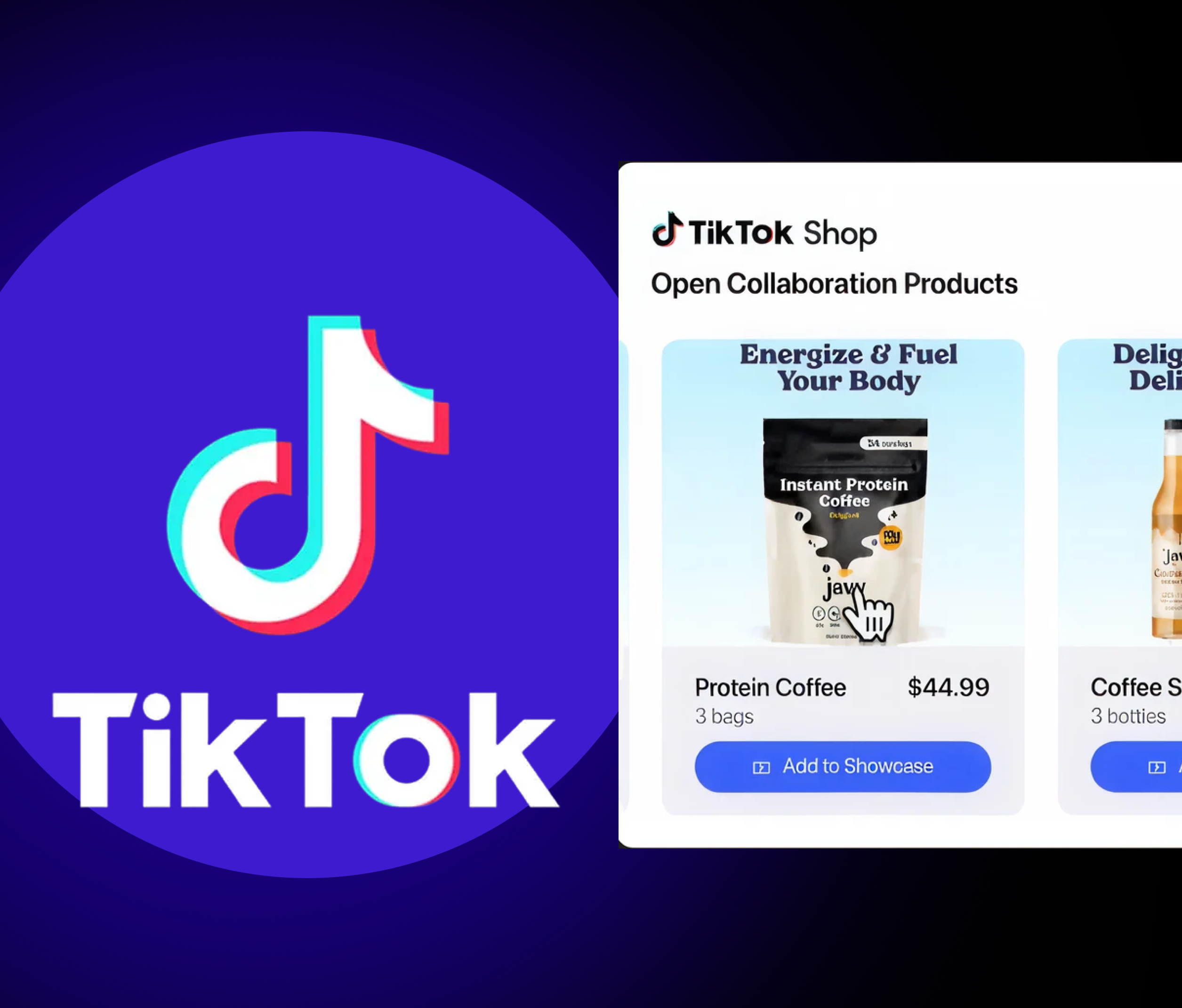


.webp)





